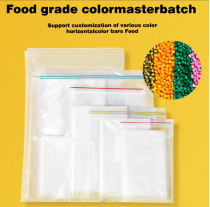plastic refuse bags
The Environmental Impact of Plastic Refuse Bags
In our modern world, convenience often comes with a price. One of the most ubiquitous items in our daily lives is the plastic refuse bag. Originally designed to make waste disposal easier, these bags have become a significant environmental concern, affecting wildlife, ecosystems, and the climate. This article delves into the implications of plastic refuse bags, their environmental impact, and potential alternatives that could pave the way for a more sustainable future.
Plastic refuse bags, often made from low-density polyethylene (LDPE), come in various forms and sizes. They are cheap to produce, convenient for consumers, and are available in almost every retail environment. However, their convenience belies a more troubling reality most plastic bags are used only once before being discarded. According to estimates, hundreds of billions of plastic bags are used annually around the world. Tragically, the vast majority of these bags do not end up being recycled. Instead, they contribute to the growing heaps of plastic waste that clutter landfills and oceans.
The statistics on plastic pollution are alarming. It is estimated that only about 10% of plastic is recycled globally, and plastic bags comprise a significant portion of this waste. When discarded, plastic bags can take anywhere from 200 to 1,000 years to decompose, depending on environmental conditions. During this period, they break down into smaller microplastics that can infiltrate ecosystems. These microplastics have been found in the stomachs of marine creatures, leading to a cascade of adverse effects throughout the food chain. Studies suggest that even the seafood we consume may contain traces of plastic, posing potential health risks to humans.
Beyond the wildlife threats, plastic refuse bags significantly contribute to climate change. The production process of plastic is resource-intensive, relying on fossil fuels that exacerbate greenhouse gas emissions. Manufacturing plastic bags not only depletes natural resources but also generates pollutants that can harm the air and water quality. The cumulative effect is a potent contributor to the global climate crisis.
plastic refuse bags

In response to these issues, many countries and communities have initiated measures to mitigate the environmental impact of plastic refuse bags. Some towns and cities have instituted bans on single-use plastic bags, encouraging the use of reusable fabric or biodegradable alternatives. For instance, stores in numerous regions now offer incentives for customers who bring their own bags, while also providing more eco-friendly options at checkout. This shift toward sustainable materials aims to reduce the number of plastic bags in circulation.
However, challenges remain. The production and disposal of biodegradable bags can also pose environmental risks if not properly managed, as they can produce methane—a potent greenhouse gas—when they decompose in landfills. It is essential to educate the public about proper disposal and encourage composting where possible to prevent these bags from contributing to the pollution cycle. Additionally, consumer habits need to evolve. Greater awareness about the environmental impacts of plastic refuse bags can stimulate a cultural shift towards sustainability.
The transition away from plastic refuse bags also requires innovation in materials science. Research is ongoing in developing bioplastics that can decompose effectively and sustainably, offering a potential solution that balances convenience with environmental responsibility. Public investment in recycling facilities and waste management infrastructure is also necessary to create a closed-loop system for waste, ensuring that materials are reused rather than discarded.
In conclusion, while plastic refuse bags provide undeniable convenience, their long-term environmental consequences are profound. The challenge lies not just in banning plastic bags but in fostering sustainable alternatives, improving recycling systems, and educating the public about the importance of reducing plastic waste. By working together—governments, industries, and consumers—we can mitigate the impacts of plastic refuse bags and create a more sustainable future for our planet. Reducing our reliance on single-use plastics is imperative for our environment, and it begins with the choices we make today.
-
The Best Uses for Small Trash Bags in Daily LifeNewsJul.01,2025
-
Stylish Reusable Grocery Bags TrendsNewsJul.01,2025
-
Shipping Advantages of Using Bubble Envelopes BulkNewsJul.01,2025
-
How Compostable Mailing Bags Reduce Environmental ImpactNewsJul.01,2025
-
Environmentally - Friendly Bulk Poly MailersNewsJul.01,2025
-
Eco Friendly Custom Laminated Tote BagsNewsJul.01,2025
-
Have the freedom of customizing your custom mailers any way you want! Our dedicated packaging support will help deliver you the mailing experience you need to elevate your shipping experience to the next level! Start making a strong impression on your customers and stand out from your competitors! -
LIYA uses high quality raw materials which directly purchased from large enterprises domestic and overseas such as PetroChina, Sinopec, Sabic, Equate, ExxonMobil, Dow Chemical, Total, and Borouge, ensuring the price advantage and quality of the raw materials. -
LIYA uses high quality raw materials which directly purchased from large enterprises domestic and overseas such as PetroChina, Sinopec, Sabic, Equate, ExxonMobil, Dow Chemical, Total, and Borouge, ensuring the price advantage and quality of the raw materials.





